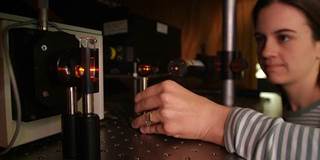Pundits have long predicted that biology would dominate the twenty-first century, just as physics dominated the twentieth century. But, with investment in biomedical R&D falling rapidly in recent years, the “century of biology” may turn out to be little more than a fantasy.
LA JOLLA, CALIFORNIA – Pundits have long predicted that biology would dominate the twenty-first century, just as physics dominated the twentieth century. But biomedical research has yet to achieve the kind of productivity increases that accompanied the industrialization of combustion, electricity, and electronics. Will the “century of biology” turn out to be little more than a fantasy?
The problem largely comes down to a decrease in biomedical research-and-development expenditure. As it stands, roughly $270 billion is invested in the field each year, producing an impressive half-million research publications, but only 20-30 new medicines.
The discrepancy between spending and output adheres to what has come to be known as “Eroom’s law” – Moore’s law in reverse. Moore’s law observes the increase in computer processing power over time – specifically, that the number of transistors that can be placed cheaply on an integrated circuit doubles every 18-24 months. By contrast, Eroom’s law charts the regress in new drug approvals, noting that the costs of developing a new medicine double roughly every nine years.

LA JOLLA, CALIFORNIA – Pundits have long predicted that biology would dominate the twenty-first century, just as physics dominated the twentieth century. But biomedical research has yet to achieve the kind of productivity increases that accompanied the industrialization of combustion, electricity, and electronics. Will the “century of biology” turn out to be little more than a fantasy?
The problem largely comes down to a decrease in biomedical research-and-development expenditure. As it stands, roughly $270 billion is invested in the field each year, producing an impressive half-million research publications, but only 20-30 new medicines.
The discrepancy between spending and output adheres to what has come to be known as “Eroom’s law” – Moore’s law in reverse. Moore’s law observes the increase in computer processing power over time – specifically, that the number of transistors that can be placed cheaply on an integrated circuit doubles every 18-24 months. By contrast, Eroom’s law charts the regress in new drug approvals, noting that the costs of developing a new medicine double roughly every nine years.